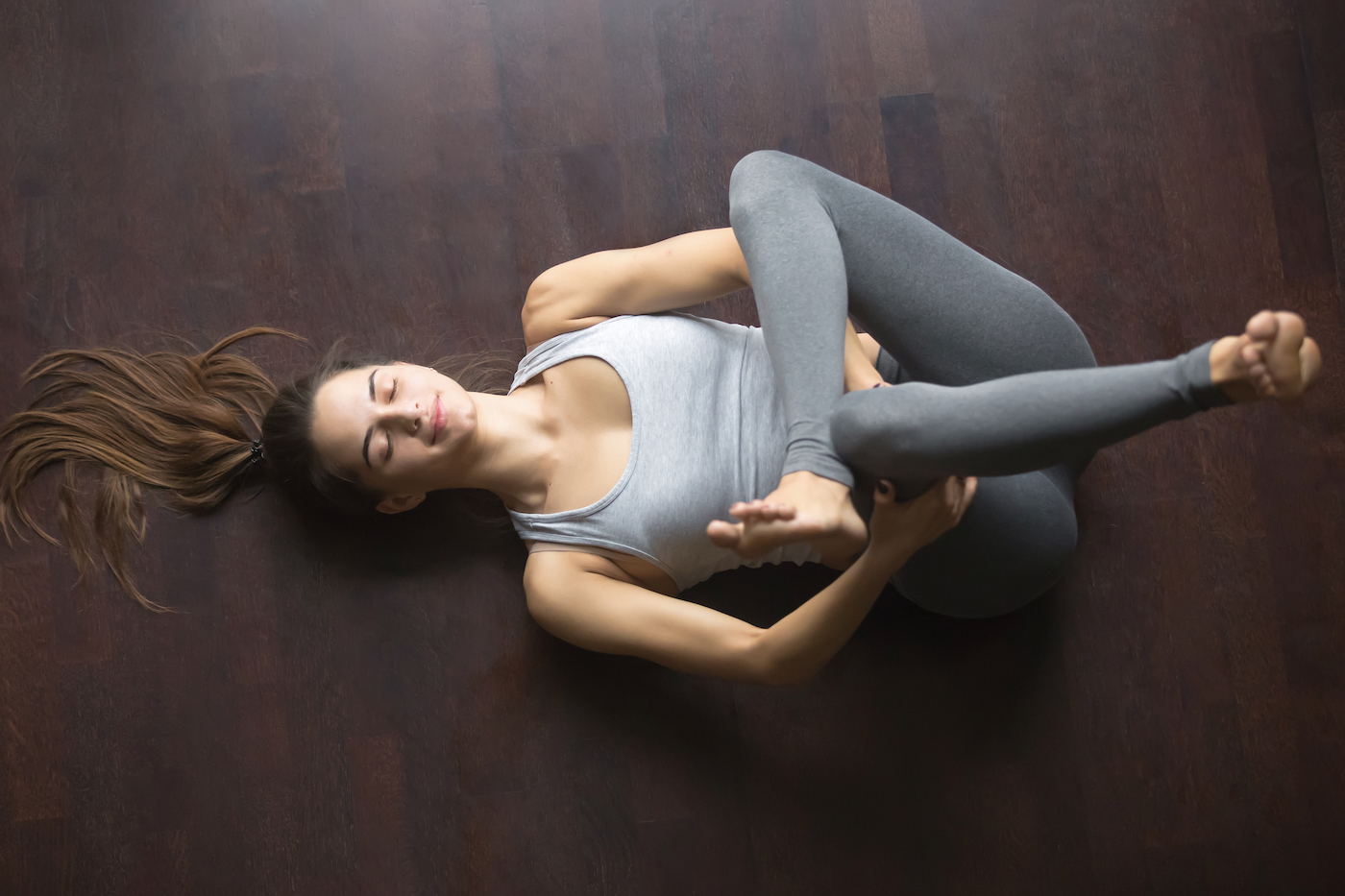
January 30, 2020 at 02:00AM by CWC
Stretching is an important part of any routine, no matter who you are. It helps with recovery, it aids in building flexibility and mobility, it improves posture—and the list goes on and on. But if you’ve got lower-body pain from sitting all. day. long. or you feel uncomfortable after an intense workout, doing stretches for sciatica is critical for relieving pain and discomfort.
For anyone who isn’t familiar with the term, sciatica refers to any sort of shooting pain that goes from your back, through your glutes, and down your leg—aka along your sciatic nerve, which is the longest in your body. The causes of sciatic pain are extensive, but it’s usually brought on by extremes: sitting for extra-long periods of time or doing a lot of really intense exercise like HIIT or long-distance running.
Stretching, however, can help to temper the effects of sciatica. “Having a healthy joint and soft tissue mobility is important in preventing sciatica and other problems,” says Corinne Croce, PT and co-founder of Body Evloved Fitness. “Stretching is one way to help keep our joint and tissues mobile, and therefore is a great prevention tactic.”
If the symptoms have already set in, doing some stretches for sciatica can also help. “Stretching properly is a great way to help alleviate the symptoms associated with sciatica,” adds Jeff Brannigan, program director at Stretch’d. “While the cause of sciatic pain often lies in the lumbar spine, targeting the adjacent and supporting muscle groups in this area can provide relief and help to manage the discomfort in the sciatic nerve.”
ADVERTISEMENT
ADVERTISEMENTKate Spade Autumn/Winter Sale |
But with that in mind, there’s a right and a wrong way to engage in stretches for sciatica. ” I would avoid static stretching,” says Croce, and Branigan confirms that these moves put you at risk for hurting yourself. “Often when people stretch on their own, they find themselves in positions that are both weight bearing and held in place,” he says. If you’re flexible and don’t have any injury or pain, this is usually totally fine. But if you’re dealing with something like sciatica, he warns that you could wind up doing more harm than good to your muscles because you’re putting added stress onto them. “Once you’ve added stress and weight into that area you are more likely to overstretch it if you push too far too quickly.” Both pros instead recommend dynamic stretching, in which you’re doing controlled, active repetitions that won’t put the same type of pressure on your muscles.
A few techniques they recommend? Controlled articular rotations (activating muscles by taking them through their full range of motion), flossing (which helps fluid move better throughout your body), and joint mobility drills for your hips, ankles, and knees. But if you start to feel any more pain after doing these things, stop and consult a professional.
In addition to stretches for sciatica, there are a few other things that can help make you feel better. Pros suggest using ice and heat on the areas around your sciatic nerve (your lower back, hips, glutes, and hamstrings) for 15 minutes once or twice a day, and doing some gentle foam rolling work. Strengthening your core and glutes, and working on hip stability and spinal extension can also be effective. To craft a complete recovery routine, pair these practices with some of Brannigan’s favorite dynamic stretches for sciatica (many of which you’ll catch in our yoga stretches for flexibility video below.
Stretches for sciatica
[youtube https://www.youtube.com/watch?v=C-_d5hkoIj8?feature=oembed&w=500&h=281]
1. Hips: Lie on your back with both legs extended. Place your foot in the loop of a rope or strap, and use the front of your hip and quadricep to lift the exercising leg straight up until it’s perpendicular to your body, climbing hand over hand up the rope. When you’re in position, grab the ends of the strap with your opposite hand. Slightly bed that knee and extend your other hand out to keep your body from rolling. Keeping slight tension on the rope, bring your leg across the midline of your body and straight down to the surface until your hip begins to roll up. Use the rope for gentle assistance at the end of the stretch. Be sure not to pull your leg into position, which risks irritating your hips.
2. Glutes: Lie flat on your back with both legs extended straight out. Rotate your non-exercising leg toward the midline of your body by pointing your toes inward, which stabilizes your hips. Lift your exercising leg and bend the knee toward the opposite shoulder, keeping your pelvis flat on the surface. As your leg comes into range for an easy reach, place one hand on the outside of your thigh and the other outside the shin to gently guide the stretch.
3. Hamstrings: Place your foot into the loop of a rope or strap. Lift your leg until your thigh is perpendicular to your body, and gradually extend your leg by contracting your quads—the goal here is to lock your knee and fully extend your leg. If you aren’t able to reach full extension (especially at first), you may have to lower the angle of your leg from the hip. Use your rope for gentle assistance at the end of your stretch, and be sure not to pull your leg into position to avoid irritating the back of your knee.
4. Abs and low back: Sit with your back straight and feet flat on the floor. Lock your hands behind your head with your elbows out, and rotate your body in one direction until you’ve twisted as far as you can go, then return to start. Hold the rotation and lean forward, reaching your elbow toward the ground. Return to an upright position and repeat, working one side at a time before moving onto the other.
For more intel on what “dynamic stretching” looks like, check out the video below:
[youtube https://www.youtube.com/watch?v=zQrwJp2E4Rc?feature=oembed&w=500&h=281]
Don’t forget about those other tight body parts! Here are the best stretches you can do for your back and spine, and why you need to be relieving your jaw tension on the reg.
Author Zoe Weiner | Well and Good
Selected by CWC
ADVERTISEMENT
ADVERTISEMENTSports Direct Free Delivery on All Orders! |

ADVERTISEMENT
ADVERTISEMENTUp to 30% off Gift Sets |







